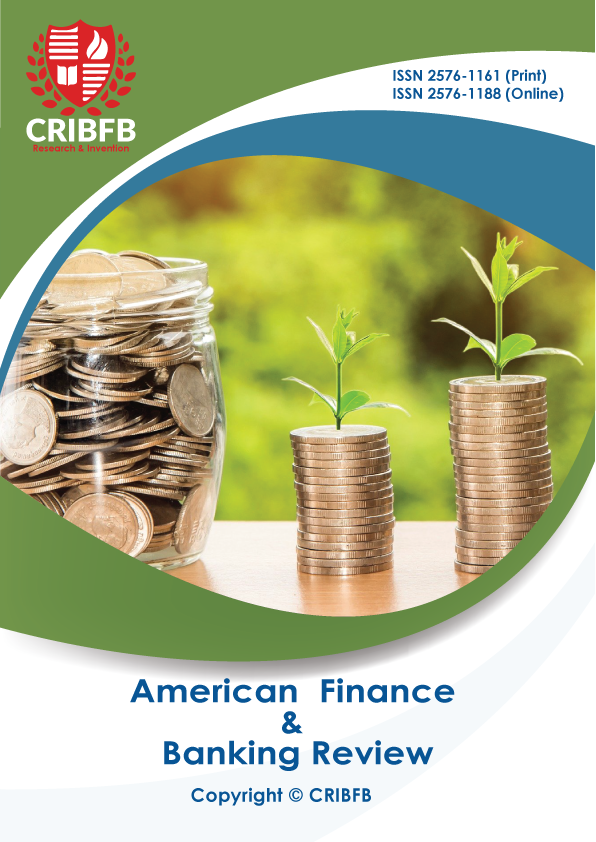The Dynamics of the Exchange Rate and Extension of Monetary Trilemma (Iran Economy Case Study)
Main Article Content
Abstract
Simultaneous making policy of interest rates, exchange rates and capital accounts can be extended to trilemma theory, contrary to its earlier theories, provided that the imbalances of the private sector, the government and the capital account adjusted through the policy variables such as the government expenditures, the interest rates on domestic deposits, the interest rates on domestic loans, effective exchange rates, foreign prices and foreign interest rates. On the other hand, the components of the extension of trilemma theory in the form of internal and external imbalances affect the exchange rate. In other words, if the real sector markets of the economy are not cleared through the aforementioned trilemma components, and policy variables, internal and external imbalances will be affected by opposite direction of net domestic assets (ΔNDA) and net foreign assets (ΔNFA) of the banking system. This is in accordance with the fundamental principles of the monetary approach balance of payments and exchange rate. Policy variables do not put pressure on the unofficial exchange rate as long as they have the same effect on the net changes in the domestic and foreign assets of the banking system. The purpose of this study is to consider the effect of internal and external imbalances on exchange rate through the simultaneous equations system, generating impulses in policy variables, and examining reactions in Iranian economy. In this paper, the monetary exchange rate determination model is analyzed and examined by using the extension of trilemma theory for macroeconomic data of Iran in the form of internal and external imbalances. The results of this study suggest that policy variables can stabilize the unofficial exchange rate (with other conditions being constant) through trading off internal and external imbalances. Thus, the economic policymaker can, while independently policing interest rates, capital accounts and government expenditures and other policy variables in this research, maintain exchange rate stability as a strategic variable and anchor the general level of prices.
Downloads
Article Details
Section
How to Cite
References
Aizenman, J., & Sengupta, R. (2013). Financial Trilemma in C hina and a Comparative Analysis with I ndia. Pacific Economic Review, 18(2), 123-146.
Aizenman, J., & Ito, H. (2014). Living with the trilemma constraint: Relative trilemma policy divergence, crises, and output losses for developing countries. Journal of International Money and Finance, 49, 28-51.
Allahyarifard, M., Falahi, M. A., Karimzadeh, M., & Najimeydani, A. A. (2019). The Internal and External Disequilibrium Relationship in Economy and Extending of Monetary Trilemma (The Case Study of Iran Economy). Econometric Modelling, 4(2), 77-108.
Baltagi, B. H. (2008). Econometrics. 4th ed., Berlin, Springer.
Bidabad, B. (2005). Macroeconometric Model of Iran. 5th ed., Tehran: Monetary & Banking Research Institute of Iran.
Fleming, J.M. (1962). Domestic Financial Policies Under Fixed and Under Floating Exchange Rates. IMF Econ Rev, 9(3), 369–380.
Frankel, J. A. (1983). Monetary and portfolio-balance models of exchange rate determination, in economic interdependence and flexible exchange rates. JS Bhandari and BH Putnam (eds.), MIT Press, Cambridge MA.
Greene, W. H. (2002). Econometric Analysis, 5th Edition. Prentice Hall: Upper Saddle River, NJ.
Gujarati, D. (2004). Basic Econometrics. Translated by Abrishami, Hamid, Tehran University Publications.
Krugman, P. (1979). A Model of Balance-of-Payments Crises, Journal of Money, Credit and Banking, 11(3), 311-325.
Krugman, P. R. (1991). Target Zones and Exchange Rate Dynamics, The Quarterly Journal of Economics, 106(3), 669-682.
Magas, I. (2018). Financial Adjustment in Small, Open Economies in Light of the “Impossible Trinity” Trilemma. Financial and Economic Review, 17(1), 5–33.
Mankiew, N. G. (2016). Macroeconomics, 9th Edition, NY, Worth Publishers.
Mundell, R. A. (1963). Capital mobility and stabilization policy under fixed and flexible exchange rates. Canadian Journal of Economics and Political Science/Revue canadienne de economiques et science politique, 29(4), 475-485.
Maurice, O. (2015). Trilemmas and Tradeoffs: Livinga with Financial Globalization, in Global Liquidity, Spillovers to Emerging Markets and Policy Responses, Vol. 20, eds. by C. Raddatz, D. Saravia, and J. Ventura of Central Banking, Analysis, and Economic Policies Book Series(Central Bank of Chile), Chapter 2, pp. 13–78.
Mussa, M. (1976). The Exchange Rate, the Balance of Payments and Monetary and Fiscal Policy under a Regime of Controlled Floating, The Scandinavian Journal of Economics, 78(2), 229-248, Proceedings of a Conference on Flexible Exchange Rates and Stabilization Policy.
Perman, R. (1991). Cointegration: An Introduction to the Literature, Journal of Economic Studies, 18(3), 3-30.
Persons, W. M. (2012). Fisher's the Purchasing Power of Money, Publications of the American Statistical Association, 12(96), 818-829.
Pilbeam, Keith. (1998). International Finance. City University, London, Macmillan Business.
Pilbeam, K. (1998). International Finance. City University, London, Macmillan Business.
Rey, H. (2016). International Channels of Transmission of Monetary Policy and the Mundellian Trilemma. IMF Economic Review, 64(1).
System of National Accounts. (2008). Prepared under the auspices of the Inter-Secretariat Working Group on National Accounts, 1, 456-458.




